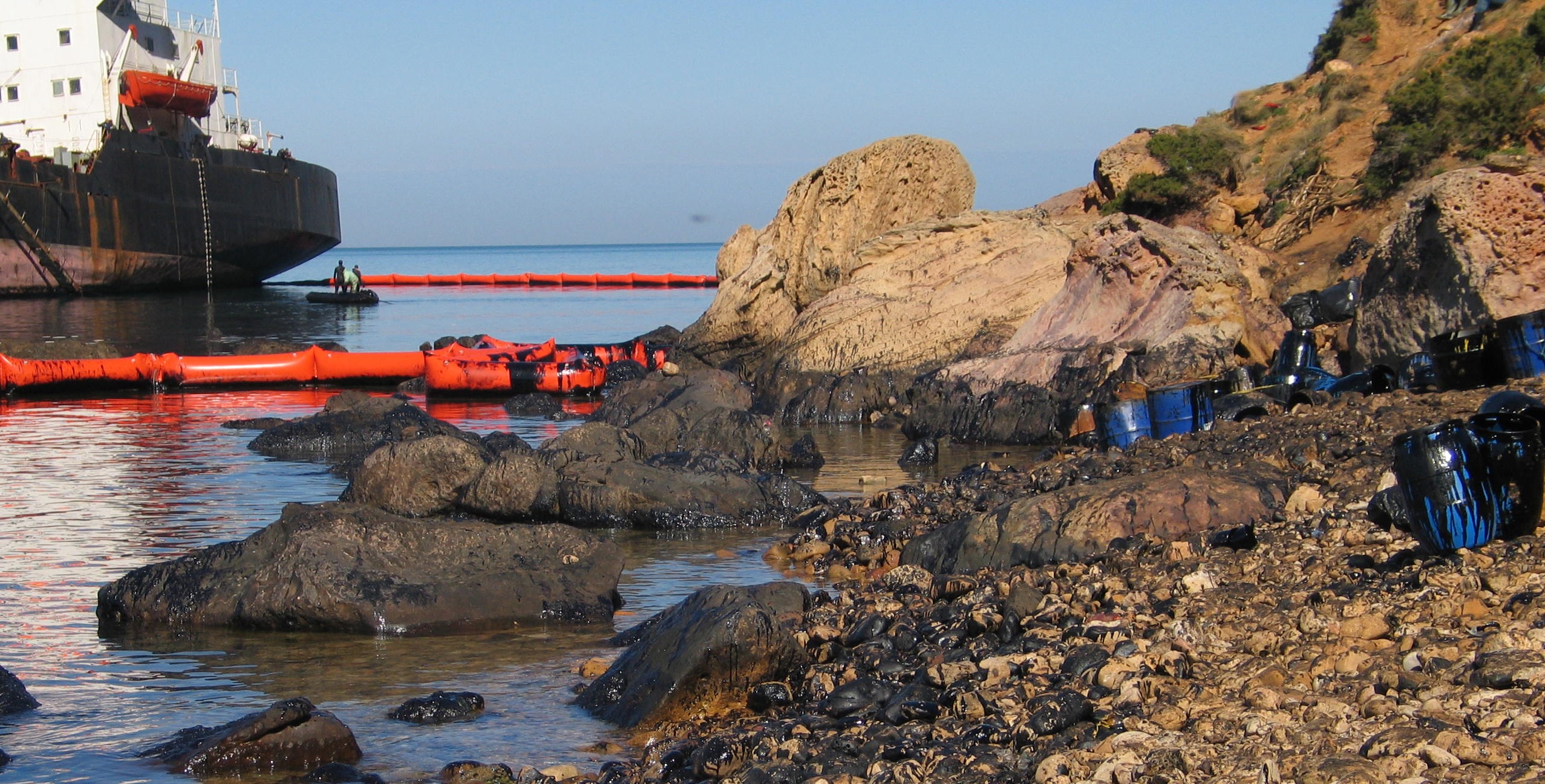At Sea Response Techniques
Containment of oil and the use of booms
Since in most cases the uncontrolled arrival of oil on a coastline is the least desirable result of an oil spill, achieving a certain control upon oil movement and spreading has been one of the prime goals of oil spill control technology.
Elimination of oil from the sea (water) body on which it has been spilled is the main purpose of oil spill response activities.
Physical removal of oil is generally considered as having certain advantages over chemical removal, for example, no additional substances are introduced into the marine environment, less oil is irreversibly lost and recovered oil can normally be reused.
The following two basically different approaches can be distinguished in physical removal of oil:
- using non specific means, manual (buckets, shovels, etc ...) or mechanical (pumps, vacuum, etc.);
- using purposely built equipment; and
- means of physical removal of oil from the sea surface, for oil recovery.
The common name used for various oil recovery units is "oil skimmer" or simply "skimmer". Oil skimmer is defined as any mechanical device specifically designed for the removal of oil (or oil/water mixture) from the water (sea) surface without altering considerably its physical and/or chemical characteristics. In most spill situations skimmers are used together with booms, but it is also possible to use them independently. It can be said that removal of oil, although closely linked, is not conditioned by the use of booms, in distinction from oil containment (by booms) which is effective only if collected oil is successively removed.
Chemical recovery
Oil spill dispersants are mixtures of surface-active agents in one or more organic solvents, specifically formulated to enhance the dispersion of oil into the sea-water column by reducing the interfacial tension between oil and water. Natural or induced movement of water causes a rapid distribution within the water mass of very fine oil droplets formed by the dispersant action, thus enhancing the biodegradation processes.
At the same time, oil that is dispersed is no longer subject to the action of wind that makes it drift towards the coast or other sensitive areas. Moreover, dispersants prevent coalescence of oil droplets and reforming of the oil slick.
Related Document:


